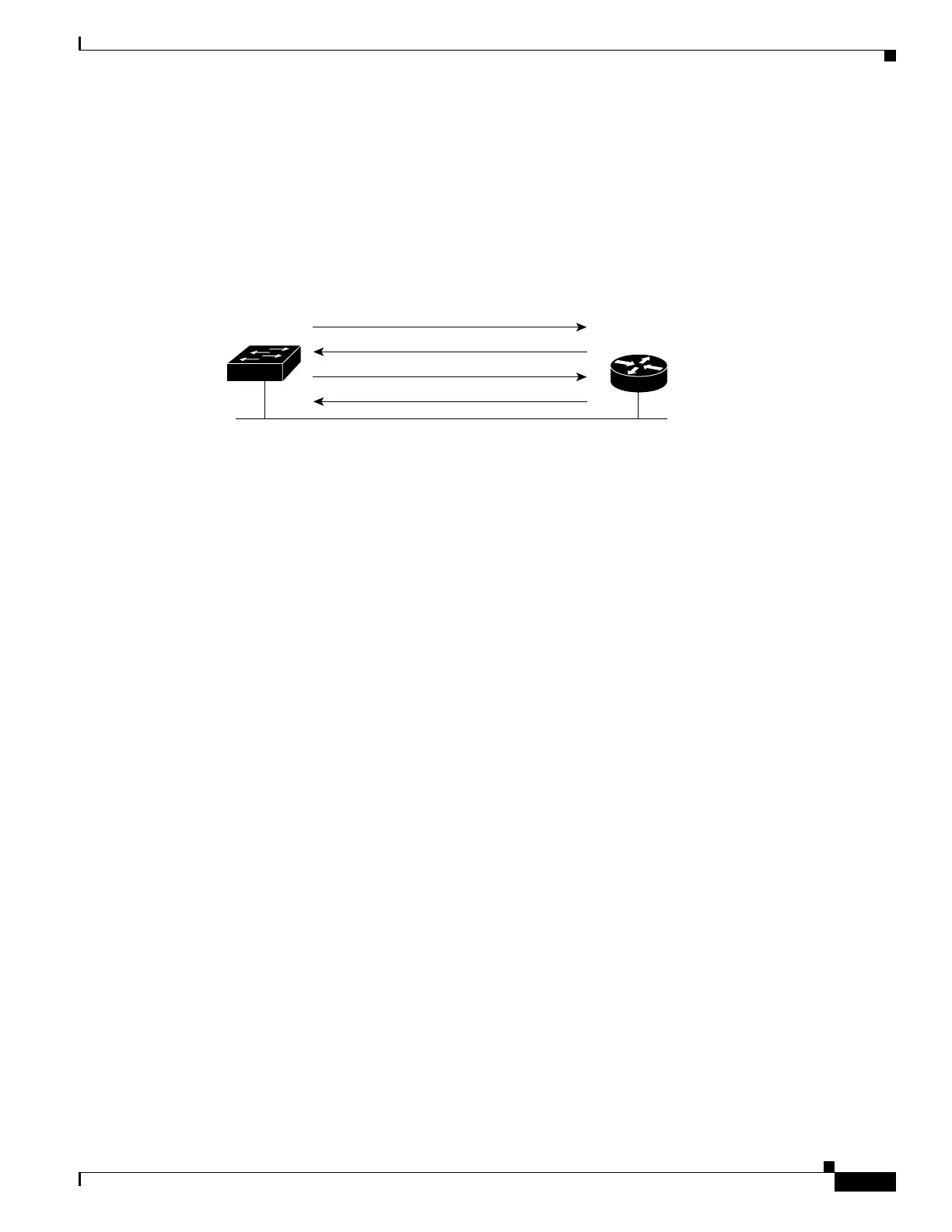3-3
Catalyst 4500 Series Switch, Cisco IOS Software Configuration Guide - Cisco IOS XE 3.9.xE and IOS 15.2(5)Ex
Chapter 3 Configuring the Switch for the First Time
Configuring DHCP-Based Autoconfiguration
DHCP Client Request Process
At startup the switch automatically requests configuration information from a DHCP server if a
configuration file is not present on the switch.
Figure 3-1 shows the sequence of messages that are exchanged between the DHCP client and the DHCP
server.
Figure 3-1 DHCP Client and Server Message Exchange
The client, Switch A, broadcasts a DHCPDISCOVER message to locate a DHCP server. The DHCP
server offers configuration parameters (such as an IP address, subnet mask, gateway IP address, DNS IP
address, lease for the IP address, and so forth) to the client in a DHCPOFFER unicast message.
In a DHCPREQUEST broadcast message, the client returns a formal request for the offered
configuration information to the DHCP server. The formal request is broadcast so that all other DHCP
servers that received the DHCPDISCOVER broadcast message from the client can reclaim the IP
addresses that they offered to the client.
The DHCP server confirms that the IP address has been allocated to the client by returning a DHCPACK
unicast message to the client. With this message, the client and server are bound, and the client uses the
configuration information that it received from the server. The amount of information the switch receives
depends on how you configure the DHCP server. For more information, see the “Configuring the DHCP
Server” section on page 3-4.
If the configuration parameters sent to the client in the DHCPOFFER unicast message are invalid (if
configuration error exists), the client returns a DHCPDECLINE broadcast message to the DHCP server.
The DHCP server sends the client a DHCPNAK denial broadcast message, which means that the offered
configuration parameters have not been assigned, that an error has occurred during the negotiation of the
parameters, or that the client has been slow in responding to the DHCPOFFER message. (The DHCP
server might have assigned the parameters to another client.)
A DHCP client might receive offers from multiple DHCP servers and can accept any of them; however,
the client usually accepts the first offer it receives. The offer from the DHCP server is not a guarantee
that the IP address will be allocated to the client; however, the server usually reserves the address until
the client has had a chance to formally request the address.
Troubleshooting Tips
Sometimes due to firmware upgrades or client VLAN configuration changes on the device, the DHCP
client may send a DHCPREQUEST message with a cached IP address. If the DHCP server does not
accept the request, the client may continue to send DHCPREQUEST messages instead of a
DHCPDISCOVER message, and fail to get an IP address from the DHCP server.
To remedy this situation, use the renew deny unknown command in DHCP pool configuration mode.
This command forces the DHCP server to reject renewal requests from clients and the DHCP server
sends a DHCPNAK denial message to the client, forcing the client back to its initial state.
Switch A
DHCPACK (unicast)
DHCPREQUEST (broadcast)
DHCPOFFER (unicast)
DHCPDISCOVER (broadcast)
DHCP server
51807

